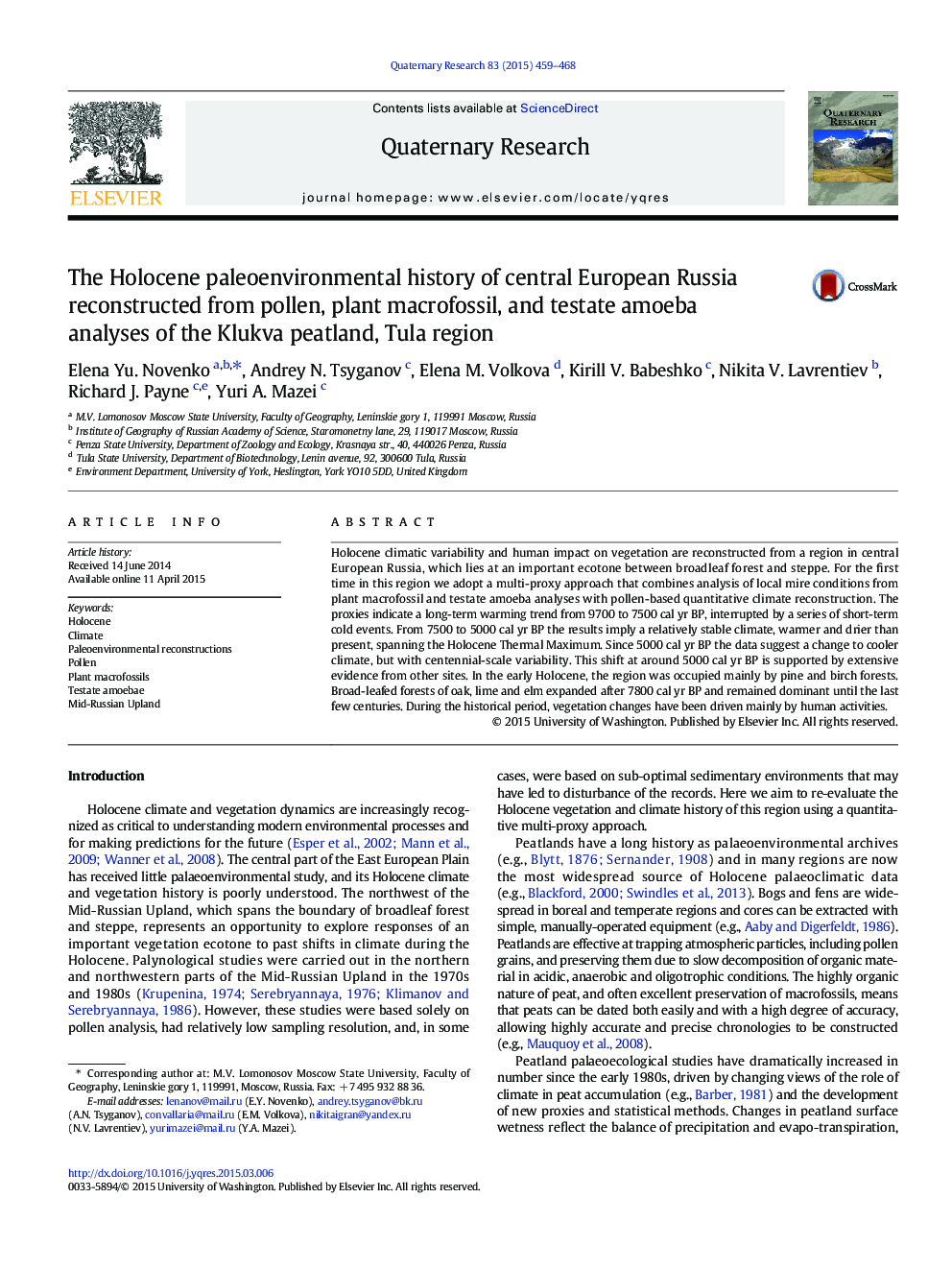| کد مقاله | کد نشریه | سال انتشار | مقاله انگلیسی | نسخه تمام متن |
|---|---|---|---|---|
| 1045209 | 944805 | 2015 | 10 صفحه PDF | دانلود رایگان |
Holocene climatic variability and human impact on vegetation are reconstructed from a region in central European Russia, which lies at an important ecotone between broadleaf forest and steppe. For the first time in this region we adopt a multi-proxy approach that combines analysis of local mire conditions from plant macrofossil and testate amoeba analyses with pollen-based quantitative climate reconstruction. The proxies indicate a long-term warming trend from 9700 to 7500 cal yr BP, interrupted by a series of short-term cold events. From 7500 to 5000 cal yr BP the results imply a relatively stable climate, warmer and drier than present, spanning the Holocene Thermal Maximum. Since 5000 cal yr BP the data suggest a change to cooler climate, but with centennial-scale variability. This shift at around 5000 cal yr BP is supported by extensive evidence from other sites. In the early Holocene, the region was occupied mainly by pine and birch forests. Broad-leafed forests of oak, lime and elm expanded after 7800 cal yr BP and remained dominant until the last few centuries. During the historical period, vegetation changes have been driven mainly by human activities.
Journal: Quaternary Research - Volume 83, Issue 3, May 2015, Pages 459–468
